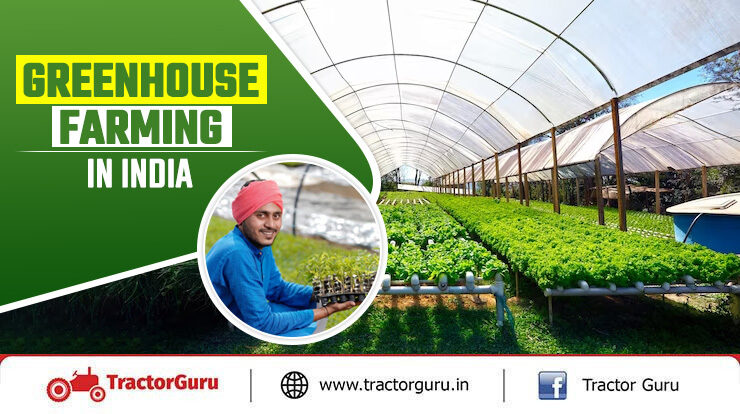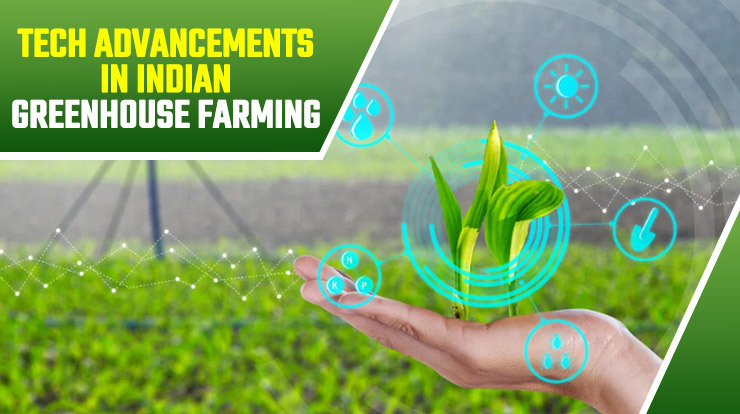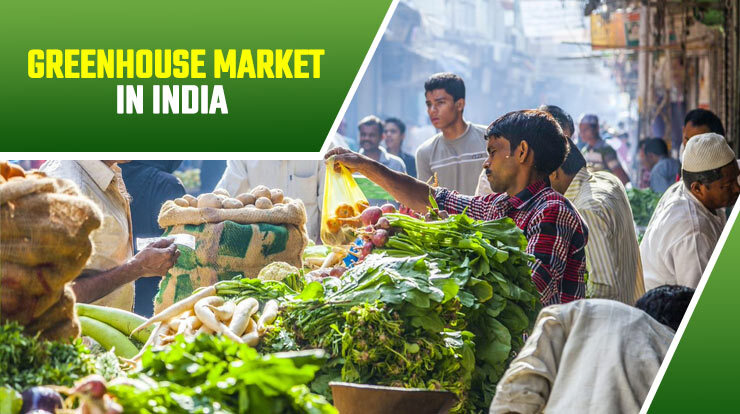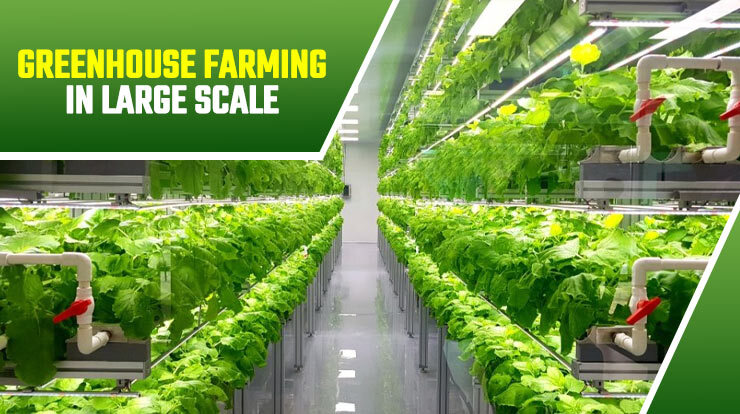Greenhouse Farming in India – Know Benefits, Importance and Types

Millions of people have earned a living, and India’s agriculture has fed a large population for millennia. But farming methods must change due to climate change and the increasing food demand. Farmers use new and ecological techniques like greenhouse agriculture to meet the growing need for food. This blog will probe the fascinating world of greenhouse farming in India, a sustainable and innovative approach that holds the key to transforming agriculture.
Greenhouse farming, also known as polyhouse farming is a revolutionary technique that has gained significant importance in India’s agricultural landscape. Greenhouse farming in India reshapes the agricultural landscape and promotes sustainable food production and can solve the problems caused by conventional farming techniques using cutting-edge and modern technology.
The development of poly house farming has also revolutionized the field of sustainable and effective agriculture. Cultivating crops within controlled environments, shielded from adverse weather conditions and pests, has transformed how we grow food. In India, where agriculture is integral to the economy and livelihoods of millions, greenhouse cultivation has opened new doors of opportunity for farmers.
Understanding the Nuances of Greenhouse Farming
In this section, we will delve deep into the realm of greenhouse cultivation, providing a comprehensive overview for agricultural enthusiasts:
What is Greenhouse Farming?
Greenhouse Agriculture is an advanced agricultural practice that involves creating a controlled environment to cultivate crops inside a structure made of glass or plastic. This protective enclosure shields the crops from external climatic variations and pests while allowing sunlight to penetrate and support their growth.
Importance of Greenhouse Farming and Advantage
Polyhouse farming holds immense significance in Indian agriculture due to several reasons:
- It enables year-round cultivation. There are some benefits in perennial cultivation. For instance, it helps reduce the dependency on seasonal changes
- It protects crops from extreme weather events. This is because the greenhouse houses within itself all the plants, ensuring protections against freak winds, rains and storms. This in turn, ensures a stable and reliable yield.
- It facilitates the growth of crops not native to the region. For example, you can grow crops that are more suited for warmer weather in colder regions. Greenhouses are wondrous in helping grow such exotic varieties and hence expanding agricultural possibilities.
Considering the importance of greenhouse in agriculture, it becomes evident that this innovative method plays a pivotal role in ensuring food security and agricultural sustainability in changing climatic conditions
Greenhouse Technology in India

India has embraced modern greenhouse farming technology to enhance agricultural productivity. Cutting-edge techniques like climate control systems, hydroponics, and automated irrigation ensure optimal conditions for crop growth.
Benefits of Greenhouse Farming
Greenhouse farming benefits include increased crop yield, efficient water usage, reduced chemical dependency, and minimized land usage. By acting as a barricade against natural disasters, greenhouse farming becomes the perfect solution for climate-vulnerable areas.
There are many points of greenhouse farming advantages that make it a sustainable and climate-resilient farming solution in India. Some of them include improved crop yields, water efficiency, a decreased reliance on chemicals, and land conservation.
Commercial Greenhouse Market in India

The commercial greenhouse market in India has witnessed exponential growth. With rising demand for fresh produce throughout the year, commercial greenhouse farming has become a lucrative business opportunity for entrepreneurs and investors.
Greenhouse Farming for Beginners
Greenhouse Agriculture might seem intimidating for beginners. But it can be as rewarding as it is challenging. You can meet the demand of a population that hasn’t had such an unprecedented supply of such exotic products before. And you know what this means – More scope for profits! So without any further ado, work on understanding the basics of greenhouse technology, crop selection, and monitoring systems. Such mastery or adeptness is for sure a prerequisite for getting into greenhouse farming.
See Also -: Government Agriculture Schemes
Greenhouse Farming Cost or Subsidy in India
The initial investment in greenhouse cultivation can be substantial, but various government greenhouse farming schemes offer subsidies to promote this eco-friendly and efficient farming method. Familiarizing yourself with available subsidies, such as the “Greenhouse Farming Subsidy” program, is crucial for financial planning.
Types of Greenhouse Farming Crops
Greenhouses allow you to grow plants of all kinds, such as vegetables like tomatoes, cucumbers, peppers, and flowers like roses and carnations. Knowing the particular needs of each crop is essential for successful greenhouse cultivation.
Is Greenhouse Farming Profitable in India?
When managed effectively, greenhouse agriculture can be highly profitable. The ability to command premium prices for off-season produce and the export potential make it an attractive option for farmers. Therefore, profitable greenhouse farming crops are key to unlocking the full economic potential of this advanced agricultural practice in India.
Best Crops for Greenhouse Farming in India
Certain crops are particularly well-suited for greenhouse cultivation in India. Examples include exotic vegetables, herbs, and high-value flowers, which are steadily demanded in domestic and international markets.
Organic Greenhouse Farming
With the growing awareness of sustainable agriculture, organic greenhouse farming is gaining traction. This practice ensures chemical-free produce, meeting the rising demand for organic products.
Large-Scale Greenhouse Farming

Large-scale greenhouse farming involves extensive cultivation of crops in vast enclosed spaces. This approach caters to commercial requirements and significantly contributes to meeting the country’s food demands. The demands are a plethora, and meeting them means the government also takes interest in it. Enabled by government subsidies and training programmes, you can arm yourself with both the knowledge and monetary prowess. This in turn will further enable you to meet the large scale demand and make your business flourish unprecedentedly.
Greenhouse Farming vs Traditional Farming
Compared to traditional open-field farming, poly house farming provides better crop control and protection, higher yields, and reduced water consumption. However, it requires more initial investment and technical expertise.
Conclusion:
Greenhouse farming has completely changed crop cultivation and food security in India’s agricultural industry. The government’s support for contemporary, sustainable farming methods will make farming a key factor in the future of agriculture in India. This technology can create a rich and robust farming ecosystem that can profit farmers, consumers, and the environment.
Related Blog
Organic Farming Use and Benefits
Agriculture Farming FAQ



